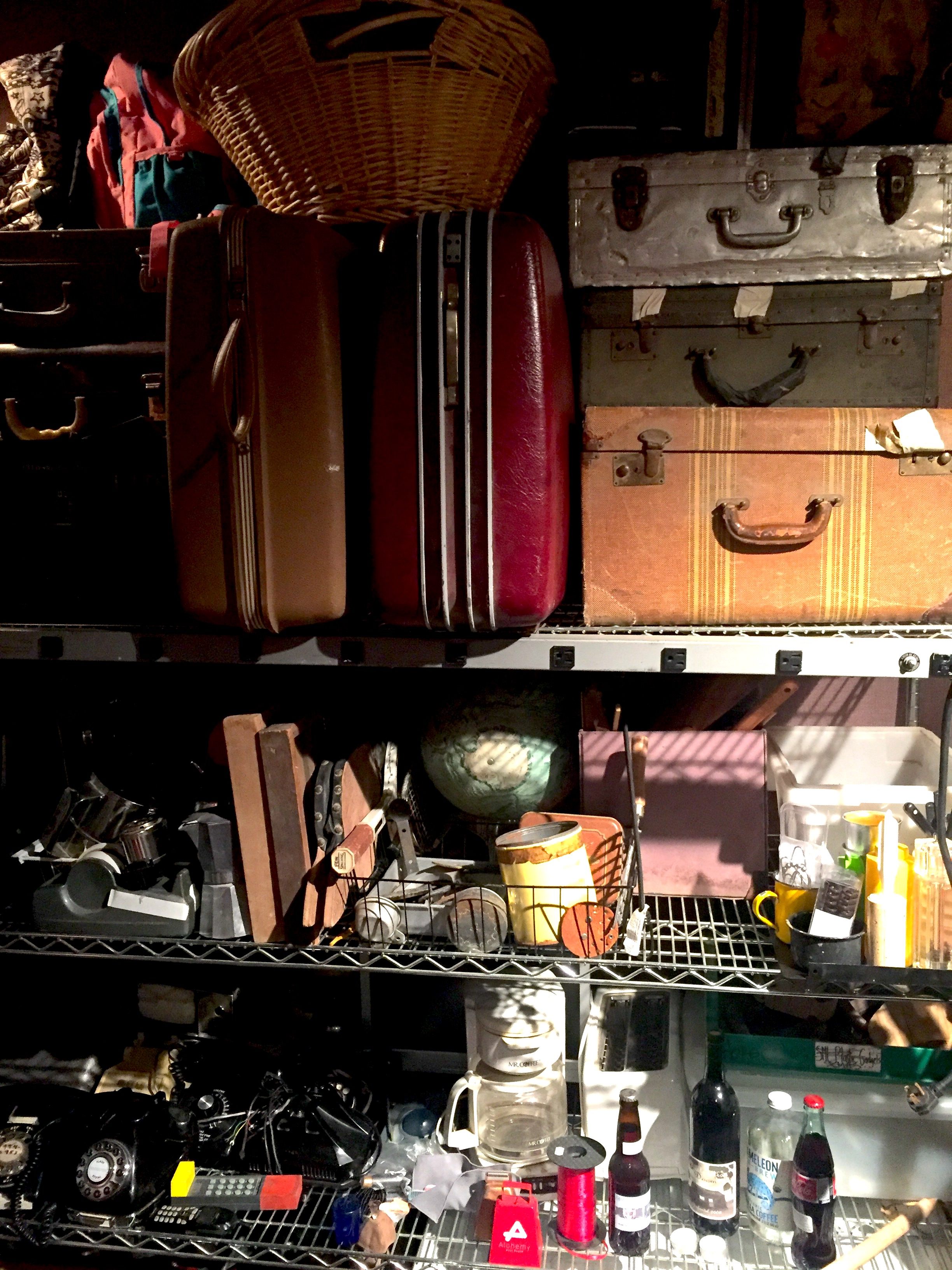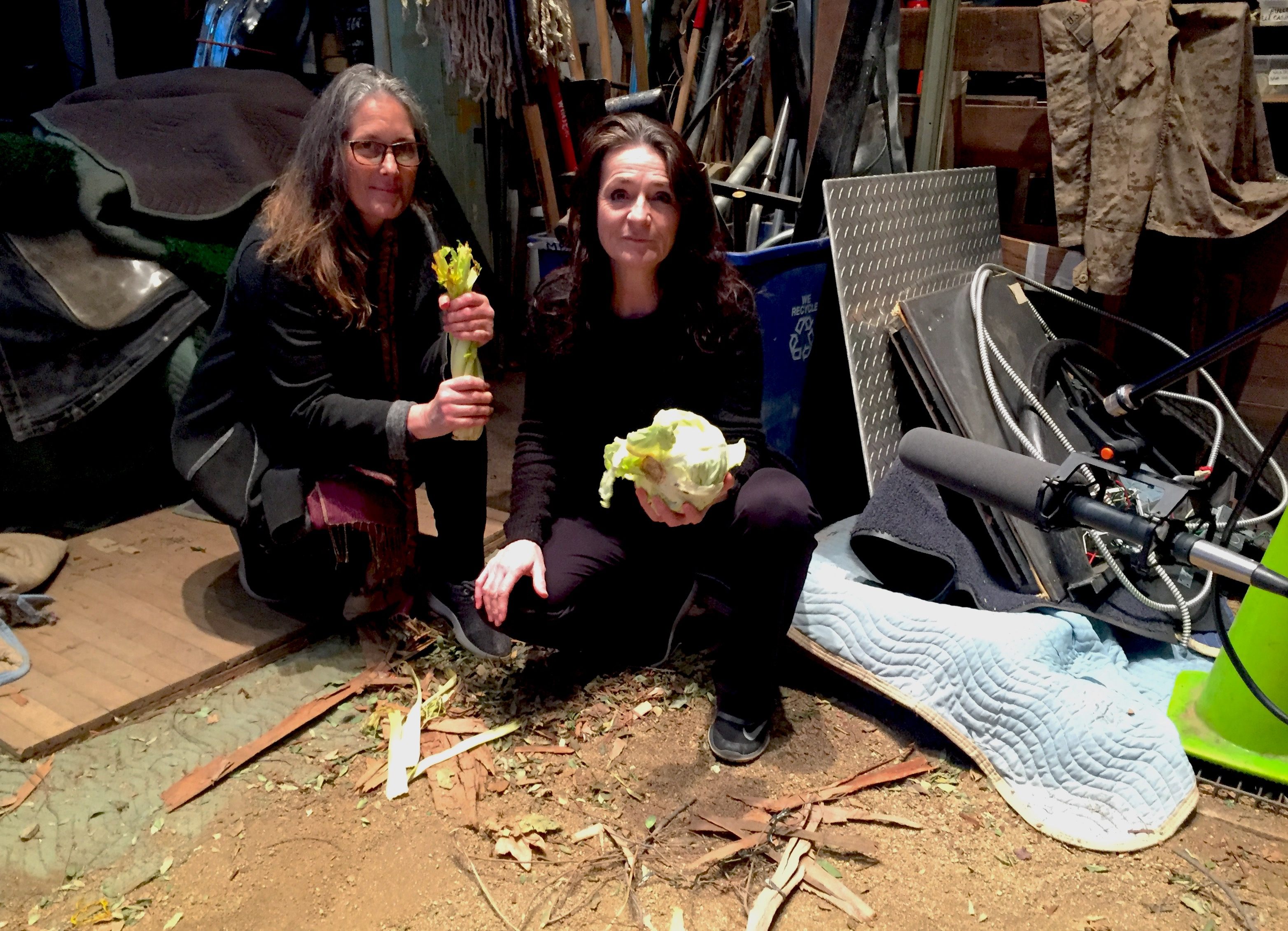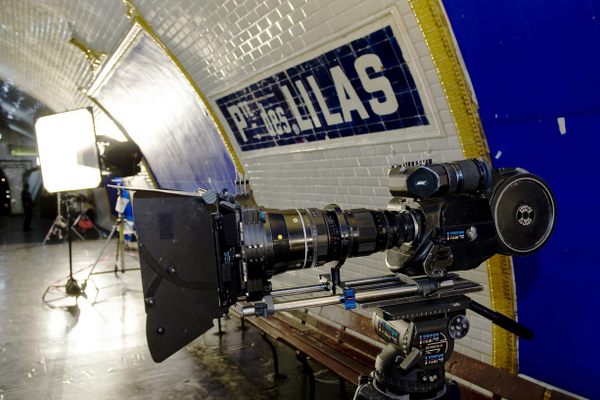Why Foley Artists Use Cabbage and Celery to Create Hollywood’s Distinctive Sounds
Adding sound flourishes to films in post-production remains low-tech.
In one of the final scenes of James Cameron’s Titanic, Rose (played by Kate Winslet) clings to a floating headboard, a piece of debris from the shipwreck that claimed over 1500 lives. While delirious and adrift in the freezing ocean, she sees a rescue team in the distance and, in that moment, moves her head. As she lifts her frozen hair off the wood, it crackles audibly.
But Rose’s hair never actually crackled, and the sound wasn’t made by hair at all: It was the sound of frozen lettuce being peeled by Foley artists in a studio. While subtle to the ear, and almost unnoticeable amidst the dialogue, score, and other sound effects, the crackle is critical to amplifying the scene’s drama. And it’s the responsibility of Foley artists to forge these unique sounds in post-production, often from lettuce heads, coconuts, and other foods.
It’s an uncharacteristically overcast day in Culver City, California—an enclave within Los Angeles where many production studios are found. I’m at Sony Pictures, where two of the studio’s resident Foley artists, Robin Harlan and Sarah Monat-Jacobs, recount the struggle to make Rose’s frozen hair sound like frozen hair. First they tried freezing a wig, but that didn’t work. Velcro didn’t do the trick, either. Later, Harlan was at home and, while making herself a sandwich, found that a head of lettuce’s crackle worked perfectly. “They really wanted to hear the sound of frozen hair pulling off of this wood bedstead, but I mean, you can’t really freeze your own head,” says Harlan.

Monat-Jacobs and Harlan have been partners for over 30 years and have worked on hundreds of films together, including There Will Be Blood, Best In Show, and several Star Trek films. They work along with a Foley sound mixer on one of three soundstages nestled within Sony’s sprawling campus. This particular Foley soundstage is replete with props and ephemera that provide films with the kind of emotional texture that words often can’t. Here, palm fronds coexist with vintage telephones, window panes that rattle during storm scenes, and a small water tank where they record clothes swishing in the deep, as they did for The Shallows. Small patches of sand and dirt line the floor, close to wooden boards that can give a Western flick an extra creak. And the co-stars of many horror, science fiction, and action films, namely celery and cabbage, sit in the fridge.

Foley, named after the industry veteran Jack Donovan Foley, has its roots in the heyday of silent films and broadcast radio shows. Organists, pianists, and sometimes entire orchestras soundtracked silent films live, and radio programs sought out sound effects that would correspond with broadcasts. “But they also, at one point, brought in sound effects guys who were really Foley guys,” says David Macmillan, a multiple Academy Award-winning sound mixer and lecturer for UCLA’s School of Theater, Film, and Television. “And they would put the horse clomps in, or the crash of the dish falling. Or footsteps on every kind of surface you can imagine.” These early Foley artists not only added texture to radio and film, they also became part of the performance. “They were, in a sense, live Foley artists,” he adds.
Foley became especially pivotal during an era of moral panic when Hollywood cracked down on what could and couldn’t be shown on-screen. “A lot of directors and writers know that sound has a really powerful potential to ignite the imagination in people, even more so than visuals sometimes,” Harlan says, citing Alfred Hitchcock as an example. “A lot of the classic directors knew that. They weren’t allowed to show a lot of graphic stuff, so a lot of things that they would drop in had to do with sound effects. They would cut away, and you would hear it.”
Now, Foley is an integral part of the sound department, and often rounds out big effects (such as explosions) with the details that make it feel colossal to watch. “[The effects team] will do a big crash, but the shards falling down? That’s us,” explains Monat-Jacobs. But something curious also happened as film, and Foley, continued evolving: Creating “authentic” sounds took a backseat to ones that evoked a visceral reaction in audiences (something that Monty Python famously parodied with coconut shells acting as horses’ hooves). “Guns don’t really make noise, but in the Foley world they make a lot of noise,” Monat-Jacobs says, mentioning “the gun rattle” central to wartime films.

That’s how celery became a staple of summer blockbusters, and especially horror films. On its own, celery sounds like, well, celery. But when recorded well and mixed correctly, the fibrous vegetable can sound like an elbow giving way to bone. “Part of the talent is performing it and recording it in a way that’s kind of hidden, with celery not recognizable as celery,” says Monat-Jacobs. With good Foley, gourds become cracked skulls, and ice cream cones double as hatching dinosaur eggs a là Jurassic Park. And jello is a must for science fiction pictures: “You may want that for someone if they’re morphing, or for lizard skins or something like that,” Harlan says.
In a brief scene that we watch in the control room, a certain star is caught in a brutal fight sequence. I find myself wincing at the sound of every punch, although Monat-Jacobs had just extolled the virtues of working with a rubbery material such as cabbage, and the many things one can do with a chamois cloth. “One of the ways you know it works is you play it back from the production and if it just fits right in, and if everyone is like ‘whoa,’” Harlan says. “Or it causes an emotional response in you, you know it’s right.”
While film (and the industry itself) has changed dramatically in the last century, Foley hasn’t budged all that much. “I think it’s interesting that Foley, in this increasingly high tech world, is … still low-tech,” says Monat-Jacobs. “We’re doing it the same way it was always done. It’s just become more complex.” That means that with the advent of recording technology, they, along with their Foley mixers, are able to layer more sounds to build bigger soundtracks. But just as in the old days, Foley artists still perform along with a film, though it’s not in front of an audience now. Only the mixer behind the soundboard—in this case, Nerses Gezalyan—gets to see Harlan (who was an actress) and Monat-Jacobs (who comes from a radio background) in action.

That’s also why the two believe that Foley prevails in a rapidly-shifting world where even traditional headphone jacks are becoming obsolete. “People have been saying to me since I’ve been doing this, ‘One day it’s not going to be relevant,’” Monat-Jacobs says. “But you don’t get the performance when you do that.” Harlan adds: “There’s a difference between every footfall, depending on if you’re on your heel or toe. Or walking through the forest, or walking on your toes because you don’t want to be heard. It’s still more cost-effective and time-effective for someone to perform those footsteps than an editor to be hired to pull all of that out of a library.” Many editors do have a library of Foley sounds, but in addition to not being any more efficient, according to the duo, using libraries produces sound with less character, especially if it’s done electronically.
The low-tech stylings of Foley artists remain in demand, and it’s a competitive field. The two are quick to say that there’s a lack of education about it in film school (“It’s 15 minutes over four years,” Harlan quips), and apprenticeships don’t crop up too often. But people with performance backgrounds in dance, acting, and music often become Foley artists. “There’s a technical aspect of doing it in sync, but then you have to bring whatever emotion to it, too,” says Monat-Jacobs.
For many people, the process of making and sharing food has an emotional weight to it. But it takes on a completely different meaning in Foley, where, even in a blockbuster that grossed over $1.8 billion and used CGI, a cup of pudding or a head of lettuce can become the sound of a character in flux or distress. “Sometimes certain things don’t make a sound, but in movie world, it needs to have a little magic,” Monat-Jacobs says. “You will make a sound of something and you know it’s not real, but it helps sort of enhance it a bit.” Harlan adds: “And we’re not going to break our bones. I like my job, but not that much.”
This story originally ran on June 5, 2018.
Gastro Obscura covers the world’s most wondrous food and drink.
Sign up for our regular newsletter.













































Follow us on Twitter to get the latest on the world's hidden wonders.
Like us on Facebook to get the latest on the world's hidden wonders.
Follow us on Twitter Like us on Facebook